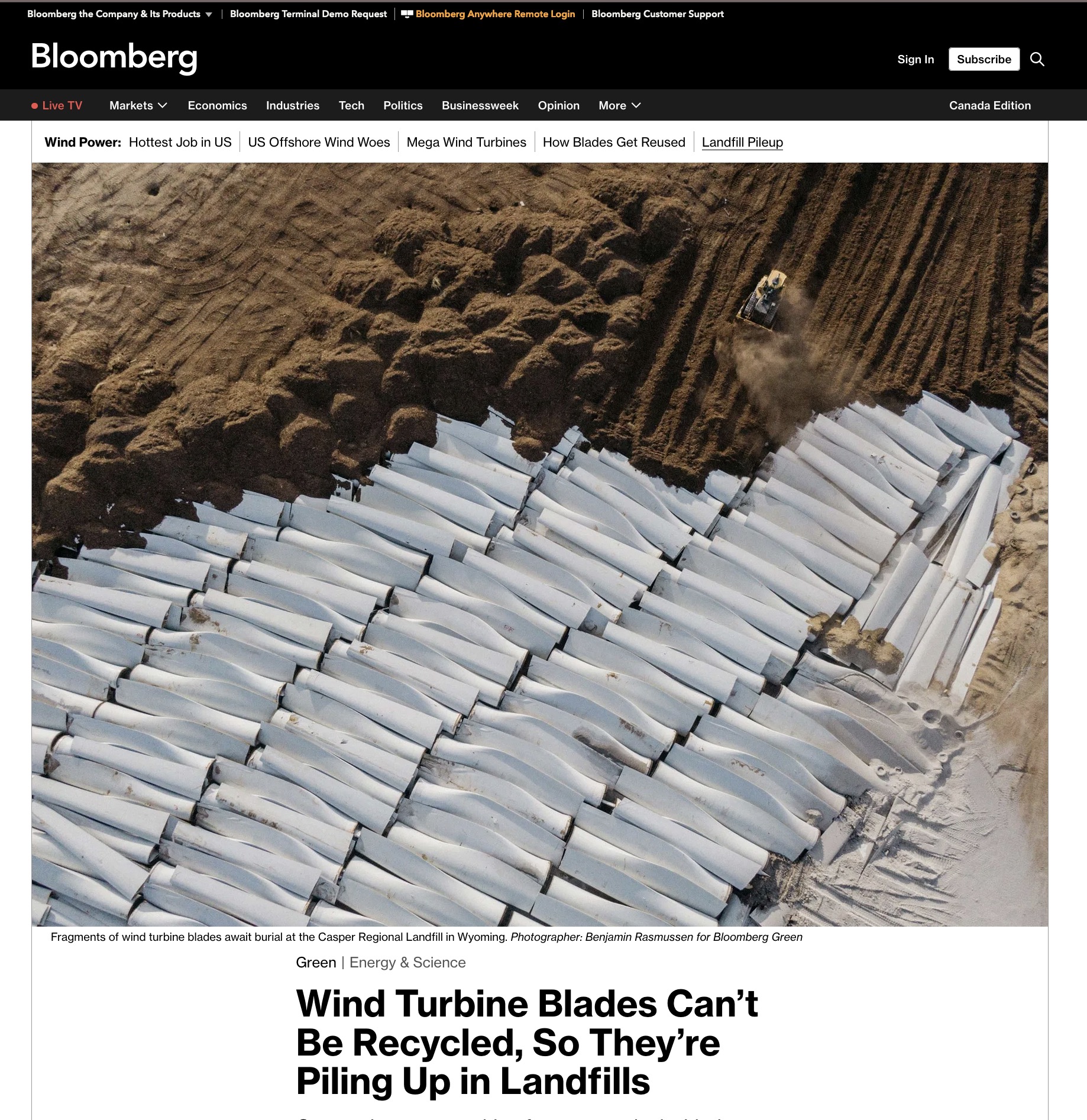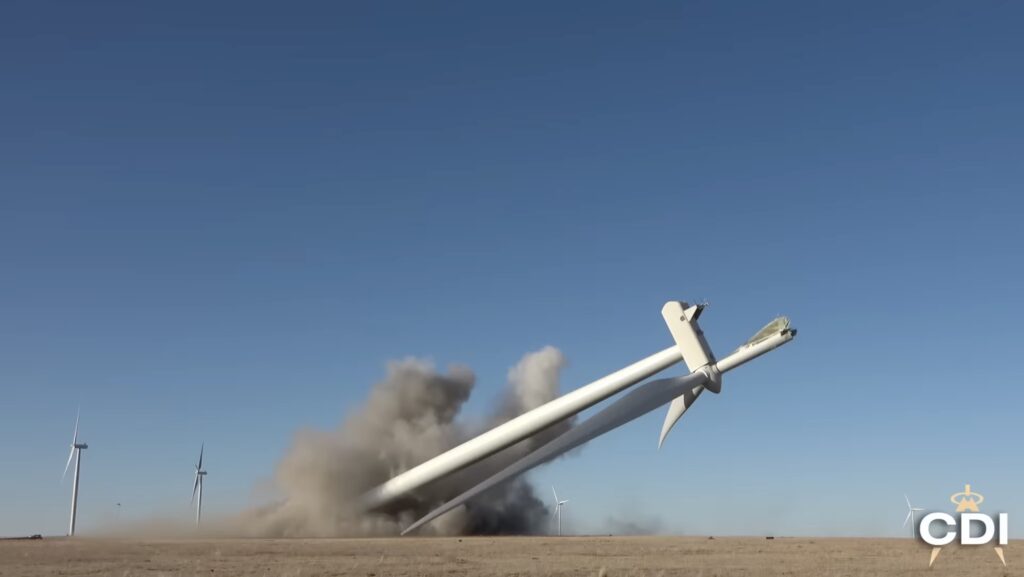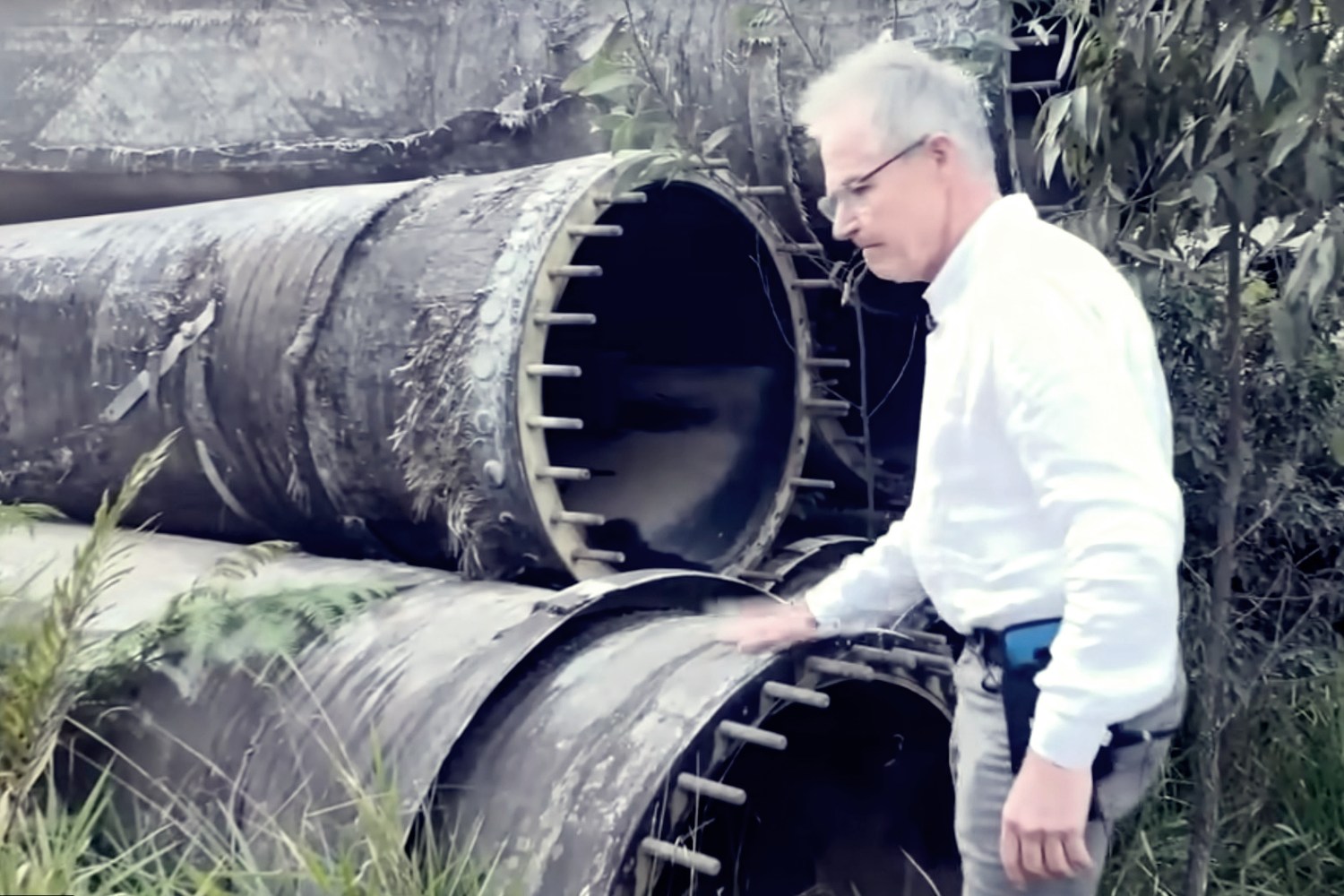By Ronald Stein, P.E. from The Heartland Institute, July 18, 2023. Mr. Stein is an internationally published columnist and energy consultant, and a policy advisor for The Heartland Institute.
Wind turbines, once touted by the few wealthy and less populated countries as a clean solution for electricity, are now becoming an eyesore, a hazard, and a significant environmental threat.
After decades of operating around the world for the few wealthy and less populated countries, wind turbines continue to have a live expectancy of about 20 years. To date there has yet to be discovered a financially viable means of recycling those wind turbines. As a result, today’s old wind turbines are being dumped into toxic waste dumps.
Because wind turbine blades are very difficult to recycle, the waste stream created by the retired blades is a mounting problem. Globally by 2050 projections are that there will be 43 million tons of blade waste produced EVERY YEAR — the equivalent of 215,000 locomotives.
Posted on Facebook by Senator Gerard Rennick
LNP Senator for Queensland, Australia.
As wind farms age, the turbines begin to break down and require maintenance. However, due to the high costs associated with removing them, many companies are choosing to leave them in place. This poses several problems, including the potential for oil leaks from the turbines, and the overall negative impact on the landscape.
The first generation of wind turbines are starting to reach the end of their service lives, while others are replaced early to make way for newer technology – including longer turbine blades that can sweep more wind and generate more intermittent electricity – the question of what to do with their huge blades becomes more pressing.
These abandoned wind turbines pose significant environmental and safety risks, as they can leak toxic chemicals and other hazardous materials into the surrounding environment and can even collapse or catch fire.
The life cycle for renewables runs from design, procurement and construction through operations and maintenance, and repair, as well as the life ending decommissioning and disposal or recycling and restoration of the landscaping back to its original pristine condition.

It’s time for those few wealthy governments to “clean up” their previous subsidized programs for intermittent electricity and act to subsidize the development of methods to properly decommission wind turbines before they become a larger environmental crisis.
The governments that subsidized the designing and construction have the responsibility to seek decommissioning, restoration, and recycling standards down to the last dandelion, just like we have for decommissioned mines, oil, and nuclear sites.

Wind farms are typically located in areas with consistent wind patterns. For the vast acreage required for wind and solar, it’s pathetic destruction of pristine landscapes!
The American public has been speaking through the not-in-my-backyard (NIMBY) individuals, and expressing their discontent with such features as unsightliness, extensive acreage requirements, noise, and environmental risks to the community.
For all Americans, Robert Bryce just finished updating the Renewable Rejection Databaseto include a spate of restrictions or rejections that have been enacted in Iowa, Illinois, and Ohio.
- The new rejection totals: Since 2015, there have been 391 rejections or restrictions of wind electricity projects and 135 rejections or restrictions of solar projects, bringing the total number of rejections of all sites targeted for the generation of occasional electricity to 526.
- So far in 2023, just in America, there’ve been 24 rejections of wind turbine projects and 24 rejections of solar projects.
Consistent with the NIMBY actions in America to reject so-called renewable electricity, Sweden shocked Europe by abandoning ‘Unstable’ Green Electricity Agenda, and returning to Nuclear Power. Finance Minister Elisabeth Svantesson cited the need for a more “stable electrical supply system,” pointing out the inherent instability in wind and solar electricity generating sources.
The energy crisis in Europe is collapsing as countries like the Netherlands, Czech Republic, and Greece are all beginning to realize that everything that needs electricity is made with fossil fuels and they’re reverting. They’re also recognizing that all the components of wind turbines and solar panels are made from the oil derivatives manufactured from crude oil.
In addition, Sweden’s new government has abolished state subsidies for electric cars and plug-in hybrids.
Another reality is that all the mineral products and metals needed to make wind turbines, solar panels, and EV batteries are mined and processed in places like Baotou, Inner Mongolia, Bolivia, and the Democratic Republic of Congo, mostly under Chinese control. Decommissioning and restoration of those mining landscapes back to their original pristine condition is not in the cards in developing countries.
Since Germany shut down its last three remaining nuclear power plants, the country has had to turn to its neighbors to keep the lights on. Germany has gone from being an exporter of electricity to an importer.
For profitability and sustainability, private industry business decisions are based on return-on-investments (ROI) which directly relates to affordable, reliable, continuous, and uninterruptable electricity to support their investments. Thus, Germany should look at Sweden who has just abandoned the idealistic goal of occasional electricity from wind and solar and committed to nuclear for electricity that is not only continuous and uninterruptible but emission free.
It is crucial that we address this issue and find sustainable solutions for decommissioning and recycling of these wind turbines. As a society, we must prioritize responsible and safe disposal of renewable electricity infrastructure to truly achieve a sustainable future.
Shockingly, the recycling of worn-out turbine blades, solar panels, and EV batteries, in the few wealthy and less populated countries that are subsidizing intermittent electricity is not yet in the cards!
Wind Concerns is a collaboration of citizens of the Lakeland Alberta region against proposed wind turbine projects.


